MARVEL SUPERHEROES
FUN IN EXPLORING LIFE AND LITERATURE
The Hero's Journey in Marvel's Universe: A Campbellian Analysis
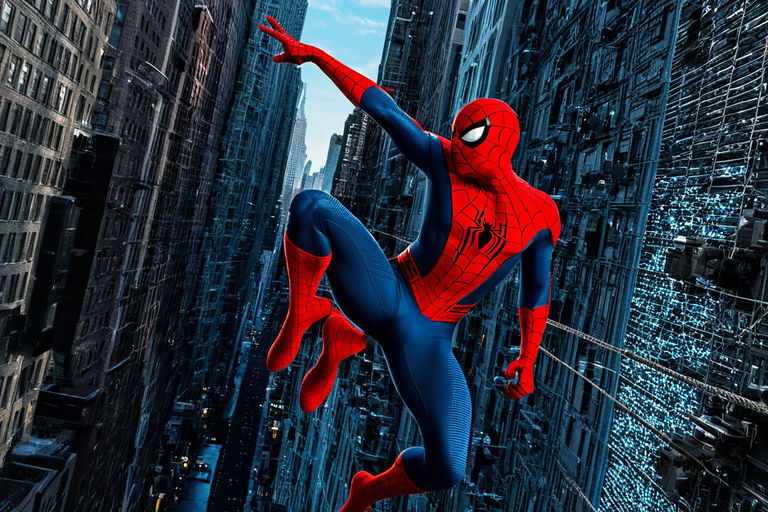
The Marvel Universe, with its vast pantheon of superheroes, has become a modern mythology, captivating audiences worldwide through its epic narratives and complex characters. At the heart of Marvel's storytelling lies the universal structure of the hero's journey, as outlined by Joseph Campbell in his seminal work, "The Hero with a Thousand Faces." This article delves into how Marvel's superheroes embody Campbell's monomyth, drawing parallels between ancient myths and the journeys of contemporary heroes like Spider-Man, Iron Man, and Captain Marvel.
Joseph Campbell describes the first stage of the hero's journey as the "Call to Adventure," where the hero is invited to leave their ordinary world and embark on a quest. In Marvel's universe, Peter Parker's transformation into Spider-Man serves as a quintessential example. The bite from a radioactive spider and the subsequent murder of his Uncle Ben propel him from his ordinary life into one of heroism, emphasizing the classic motif of destiny thrust upon an unsuspecting individual.
The "Road of Trials" constitutes a series of challenges that the hero must overcome, often leading to their growth and development. Tony Stark, or Iron Man, embodies this stage through his capture and subsequent escape using the first Iron Man suit. Stark's journey from a self-centered arms dealer to a superhero reflects his overcoming of physical and moral challenges, showcasing the transformative power of adversity.
Campbell's hero often encounters a mentor who provides guidance, wisdom, or magical aid. For many Marvel heroes, this role is filled by figures such as Yon-Rogg for Captain Marvel, or even the collective wisdom of the Avengers team. These mentors play crucial roles in guiding the heroes through their journey, offering support and knowledge that enable the heroes to face forthcoming challenges.
"The Abyss" represents the hero's greatest challenge, often involving a symbolic death and rebirth. Captain America's sacrifice in "Captain America: The First Avenger," where he crashes a plane into the Arctic to save millions, serves as a powerful depiction of this stage. Steve Rogers' "death" and subsequent awakening in the modern world symbolize his rebirth, marking a pivotal point in his hero's journey.
After overcoming the ultimate challenge, the hero undergoes a transformation, gaining a new understanding or power. This transformation is vividly portrayed in Thor's arc, especially in "Thor: Ragnarok," where he discovers his true strength lies not in his hammer, Mjolnir, but within himself. The Return phase sees the hero bringing back knowledge, wisdom, or power that can be used for the benefit of their original world. Thor's return to Asgard to confront Hela and ultimately save his people exemplifies this return with newfound wisdom and power.
The reason Marvel's superheroes resonate so profoundly with audiences around the globe is not solely due to their superpowers or the spectacle of their battles. It's their human, relatable journeys of growth, sacrifice, and triumph, echoing the timeless path outlined by Campbell's hero's journey. These narratives tap into the universal quest for meaning and the desire to overcome personal limitations, reflecting the enduring appeal of the monomyth in modern storytelling.
By aligning the narratives of Marvel's superheroes with Joseph Campbell's monomyth, we gain a deeper appreciation for the storytelling craft that goes into their creation. Marvel's universe, much like the ancient myths Campbell studied, serves as a mirror reflecting our fears, aspirations, and the perennial quest for heroism in the face of adversity. In the end, the hero's journey within the Marvel Universe is not just about the characters we admire on the page or the screen but about our journey, encouraging us to face our trials with courage and to emerge transformed.
Marvel's Holographic Pantheon: The Collective Journey of Heroism
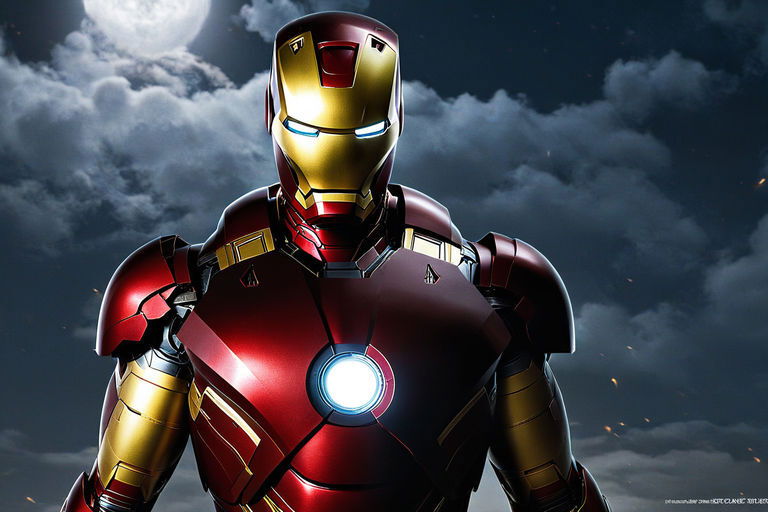
In the expansive universe of Marvel Comics, a unique narrative phenomenon unfolds—a holographic pantheon of superheroes, each embodying a distinct aspect of the hero's journey as outlined by Joseph Campbell. This collective storytelling approach weaves individual tales into a complex, interlocking mosaic, illustrating the multifaceted nature of heroism. This article explores the concept of Marvel's characters as a "holographic pantheon," where the sum of these narratives forms a complete, cohesive mythos, reflecting the complexities of the human experience and the universal quest for growth and understanding.
The holographic principle, originating in theoretical physics, suggests that the entirety of a volume of space can be represented by the information on its boundary. Applied to storytelling, this principle illuminates how individual hero narratives within the Marvel Universe—each with their distinct trials, mentors, and transformations—contribute to a larger, collective narrative. This narrative doesn't just tell the story of a single hero but of heroism itself, in all its forms and facets.
In this holographic pantheon, characters like Spider-Man, Black Panther, and Captain Marvel act as fragments of the hero archetype. Spider-Man's journey from a guilt-ridden teenager to a responsible hero embodies the call to adventure and the personal sacrifice inherent in the hero's journey. Black Panther's story, dealing with the weight of kingship and the defense of Wakanda, reflects themes of leadership and the responsibility to society. Captain Marvel represents the journey of discovering one's true identity and power, showcasing the transformation and the realization of inner strength.
These stories, while unique, share common structural elements of Campbell's monomyth, such as the initial call to action, the confrontation with and overcoming of obstacles, and the return home with newfound wisdom or power. However, it's in their differences that the true richness of Marvel's narrative universe is revealed. Each character brings a unique perspective on heroism, influenced by their background, personality, and challenges.
The interconnected stories of Marvel's superheroes create a dynamic narrative ecosystem. Events in one character's story often ripple through the stories of others, reflecting the interconnected nature of the human experience. This narrative interplay allows for a deeper exploration of themes such as sacrifice, redemption, and the struggle for justice, presenting them through diverse lenses and circumstances.
For example, the "Civil War" storyline, which pits hero against hero over the issue of government regulation, explores the complex nature of freedom, responsibility, and the costs of power. This storyline weaves together the individual journeys of numerous characters, challenging them to reconsider their beliefs and allegiances, and in doing so, contributes to their ongoing personal growth narratives.
The holographic pantheon of Marvel does more than entertain; it offers a mirror to our world, reflecting the diversity and complexity of what it means to be a hero. By presenting a multitude of hero journeys, Marvel invites its audience to see pieces of themselves in these characters, encouraging empathy, understanding, and the realization that heroism can take many forms.
In this way, Marvel's superheroes serve as modern mythological figures, embodying the values, fears, and aspirations of our society. They remind us that while the journey of heroism is fraught with challenges, it is also filled with opportunities for growth, learning, and the chance to make a difference.
Marvel's holographic pantheon presents a rich tapestry of heroism, woven from the individual threads of its characters' journeys. This collective narrative approach not only enhances the depth and complexity of the Marvel Universe but also reinforces the enduring relevance of the hero's journey as a framework for understanding our own lives and challenges. In the end, Marvel's universe teaches us that heroism is not the province of the few but a potential within us all, waiting to be awakened and realized through our actions and choices.
The Archetypes of Marvel: A Jungian Companion to Campbell's Monomyth
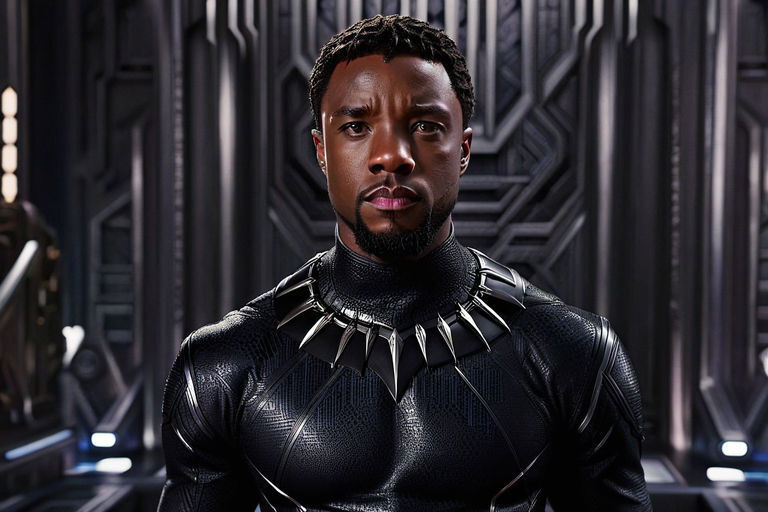
In the realm of modern mythology, Marvel Comics has carved out a universe teeming with characters that resonate deeply with audiences worldwide. While Joseph Campbell's monomyth provides a framework for understanding the journey of these heroes, Carl Jung's theory of archetypes offers a complementary lens through which to explore the psychological underpinnings of Marvel's most iconic figures. This article delves into the Jungian archetypes within the Marvel Universe, illustrating how these timeless symbols interact within the structure of the hero's journey to create compelling narratives that speak to the collective unconscious.
At the heart of every Marvel story is the Hero, an archetype embodying the quest for self-discovery and triumph over adversity. Characters such as Spider-Man, Captain America, and Iron Man are quintessential heroes, each embarking on a journey fraught with challenges that ultimately lead to personal growth and transformation. Parallel to the Hero is the Shadow, representing the dark aspects of the personality that the hero must confront. In Marvel's narratives, villains like Thanos, Loki, and Magneto serve as reflections of the Shadow, embodying fears, desires, and conflicts that the Hero must face to achieve wholeness.
The Mentor archetype, represented by characters such as Professor Charles Xavier and Nick Fury, provides guidance, wisdom, and support to the Hero, aiding in their quest. These figures often initiate the Hero into new realms of understanding and equip them with the tools necessary for success. The Anima and Animus archetypes, which symbolize the feminine and masculine aspects within each individual, are embodied by characters who challenge the Hero to integrate these opposing qualities. The relationships between characters like Tony Stark and Pepper Potts, or Thor and Jane Foster, exemplify the dynamic interplay of these archetypes, facilitating the Hero's journey towards psychological completeness.
The Trickster archetype introduces change, chaos, and humor into the narrative, challenging the status quo and enabling the Hero to see the world from a new perspective. Loki, the God of Mischief, epitomizes the Trickster, disrupting plans and forcing characters to adapt and grow. Through the Trickster's interventions, the Hero often encounters opportunities for transformation, marking a critical juncture in their journey.
Marvel's universe is a mosaic of archetypal stories, with each character playing a role in the collective narrative of heroism. The interaction of these archetypes within the framework of Campbell's monomyth creates a rich tapestry of psychological depth and complexity. As Heroes confront their Shadows, receive guidance from Mentors, and engage with their Anima or Animus, they embark on a journey of transformation that mirrors the psychological processes of individuation described by Jung.
The Marvel Universe serves as a modern canvas for the exploration of Jungian archetypes, woven into the fabric of the hero's journey. These stories resonate because they reflect the universal quest for meaning, identity, and integration that defines the human experience. Through the lens of Jung's theories, we can appreciate the depth of Marvel's characters and the narratives that have captivated the imaginations of generations. By engaging with these archetypal stories, readers and viewers embark on their own psychological journeys, finding reflections of their struggles, aspirations, and the potential for transformation within the pantheon of Marvel's heroes and villains.
The Hero's Shadow: Exploring Villainy in Marvel through Campbell's Monomyth
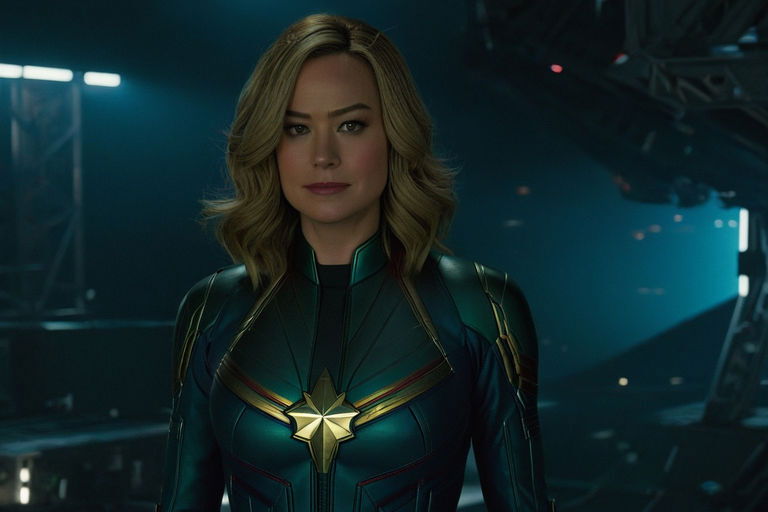
In the rich tapestry of Marvel Comics, where heroes and villains are locked in an eternal dance, the figure of the villain often stands as a mirror to the hero, reflecting the darker facets of their character and the challenges they must overcome. Joseph Campbell's monomyth, or the hero's journey, is typically applied to the trajectory of heroes. However, an intriguing perspective emerges when this framework is applied to the villains of the Marvel Universe. This article explores how Marvel's most iconic antagonists embody a distorted version of Campbell's hero's journey, revealing the depth and complexity of villainy in a narrative structure traditionally reserved for heroes.
Just as heroes receive a call to adventure, villains are often propelled by a catalyzing event that leads them down a darker path. This "call to villainy" can stem from trauma, loss, or a desire to upend the status quo. For instance, Thanos' obsession with balancing the universe is rooted in his witnessing of Titan's downfall, a formative event that shapes his destructive quest. Similarly, Magneto's experiences of prejudice and violence fuel his mission to protect mutantkind, often at great moral and ethical cost. These calls to action mirror the hero's call but are twisted by the characters' responses to their circumstances, leading to choices that set them on a path of conflict.
Villains, like heroes, face obstacles and challenges that test their resolve and further their goals. However, whereas heroes often seek to overcome these trials to bring about positive change or self-discovery, villains may embrace increasingly extreme methods to achieve their ends, revealing their resilience and the strength of their convictions. The trials of Doctor Octopus, battling both Spider-Man and his failing body, underscore his determination and the depths to which he will sink to transcend his limitations.
In Campbell's journey, the hero must confront their shadow—their darkest aspects and inner conflicts. For the villain, this confrontation can be a pivotal moment that either deepens their resolve or introduces a moment of self-doubt. Loki's journey is particularly emblematic of this, as his scheming and quest for power frequently force him to confront his own insecurities and desires for familial acceptance. This confrontation is a twisted reflection of the hero's meeting with the shadow, highlighting the villain's internal struggle and the potential for redemption or further descent into darkness.
The abyss represents the hero's greatest challenge, where they face the possibility of failure or even death. For villains, this moment often signifies their ultimate confrontation with the hero or the realization of their grand plan. However, it also presents an opportunity for reflection and transformation. In the climax of his quest, Thanos achieves his goal but at great personal cost, prompting a moment of reflection on the nature of power and sacrifice. This transformation, though not leading to redemption, underscores the complexity of his character and the tragic dimensions of his journey.
In the hero's journey, the return home signifies the hero's integration of their experiences into their everyday life, often bringing back knowledge or power that can be used for the benefit of others. For villains, the return is often a moment of reckoning or downfall, where the consequences of their actions come to the fore. However, it can also represent a return to the shadows, from which they might emerge again, changed but not defeated, ready to embark on a new cycle of conflict.
By applying Joseph Campbell's monomyth to the villains of the Marvel Universe, we gain a deeper understanding of their motivations, challenges, and transformations. This exploration reveals that villainy, much like heroism, is a journey marked by trials, confrontations, and moments of profound change. Marvel's villains are not merely obstacles for the heroes to overcome but are integral to the narrative ecosystem, reflecting the complexities of morality, power, and identity. In the shadow of the hero's journey, the villain's path offers a compelling mirror, challenging us to consider the nature of villainy and the fine line that often separates hero from antagonist.
--
4 MARVEL FAN FICTION SHORT STORIES BY TEGEDAO:
In the sprawling, neon-lit expanse of Liberty City, a new shadow moved across the skyline, weaving between the familiar glow of skyscrapers and the cacophony of urban life below. Peter Parker, known to the world as Spider-Man, found himself in this concrete jungle, far from the familiar streets of New York City. A strange twist of fate and a whirlwind of quantum anomalies had brought him here, to a place that felt both alien and eerily similar to home.
Liberty City was a place of sharp contrasts, where the bright lights of prosperity cast long shadows of crime and despair. Peter had quickly realized that, even here, his vow to protect the innocent and fight for justice was needed. From the high-rise penthouses of Algonquin to the gritty alleys of Broker, trouble brewed at every corner, and Spider-Man was ready to swing into action.
His first night in Liberty City was a baptism by fire. A high-speed chase erupted on the Broker Bridge, with a gang of car thieves trying to outrun the LCPD. Swinging into action, Spider-Man latched onto the stolen vehicle with a web, skidding it to a stop and leaving the criminals tangled up for the police to find. "Guess traffic laws apply to everyone," Spider-Man quipped as he swung away, leaving stunned officers and grateful cheers in his wake.
But Liberty City was more than just petty crimes and car chases. Deep in the underbelly of the city, a more sinister threat was growing. A ruthless gang, known as the Lost MC, had begun dabbling in something far more dangerous than their usual repertoire of theft and intimidation. They had acquired a device capable of dimensional rifts, seeking to exploit its power for their nefarious ends. It was this device that had inadvertently pulled Peter into their world, and he knew he had to stop them before they tore apart the fabric of reality itself.
As Spider-Man delved deeper into the mystery, he found an unlikely ally in Niko Bellic, a man with a complicated past and a personal vendetta against the criminal underworld of Liberty City. Together, they tracked the Lost MC to an abandoned warehouse in Acter Industrial Park, where the gang was preparing to activate the device.
The confrontation was inevitable. Spider-Man and Niko, working in unison, fought their way through the gang members. Peter marveled at Niko's resilience and combat skills, seeing in him the same drive to protect others that motivated his own actions. As they reached the heart of the warehouse, the leader of the Lost MC unveiled the device, a swirling vortex of energy crackling with power.
With no time to lose, Spider-Man launched himself at the device, using his web shooters to encase it in a cocoon of webbing, neutralizing its energy. As the final blow was struck, the leader of the gang was apprehended, and the threat to Liberty City was averted.
In the aftermath, as the sun rose over the city, casting its golden light on the streets below, Peter and Niko stood atop a building, overlooking the city they had protected. "You know, Niko," Peter began, "every city has its heroes, some just wear masks."
Niko nodded, a small smile breaking through his usually stoic demeanor. "And some, my friend, swing from the rooftops. Liberty City owes you a debt."
As Peter prepared to leave, hoping to find a way back to his own universe, he realized that heroism knew no bounds, no city limits, and no dimensional barriers. Liberty City had its own guardian now, and though his time here had ended, the legacy of Spider-Man would linger in the hearts of those he had saved.With a final swing, Spider-Man soared into the skyline, leaving Liberty City behind but taking with him the memories of a city as resilient and enduring as his beloved New York.
--
Silver Surfer:
In the vast, uncharted expanses of the holographic universe, where the fabric of reality intertwines with the echoes of possibilities, the Silver Surfer glides with the grace of a comet. His figure, a radiant sculpture of living metal, reflects the nebulous light of distant galaxies. Mounted on his surfboard-like craft, he is both voyager and artist, carving paths through the cosmos with the precision of a master.
This universe, unlike any other, is woven from the threads of light and shadow, a place where stars and constellations are not born through the turmoil of cosmic events but are crafted by the hands of those who understand the deep, underlying patterns of existence. The Silver Surfer, a being of profound empathy and cosmic power, has embarked on a singular quest: to create a constellation that mirrors the splendor and potential of life itself.
As he travels, the fabric of space itself seems to respond to his presence, stars flickering in anticipation of the new light they are about to embrace. With a thought, the Surfer summons the energies that bind the universe, channeling them through his board, which serves not only as his vessel but as his chisel and brush. He begins to sculpt in the vacuum, his movements deliberate and fluid, each stroke capturing the essence of his vision.
The stars he creates are not ordinary stars. They pulse with a light that seems alive, colors shifting and blending in a continuous dance. This constellation, his masterpiece, is a testament to the diversity of the cosmos, each star a different hue, a different size, a reflection of the myriad forms life can take. As the constellation takes shape, it begins to tell a story - not with words, but with light, with energy, with the very essence of being.
To the Surfer, this is more than an artistic endeavor; it is a message, a beacon broadcast across the dimensions. It speaks of unity in diversity, of the strength found in the harmonious coexistence of different forms. It is a call to all beings, across all planes of existence, to recognize the beauty in their differences and the power in their collective spirit.
As the final star ignites, completing the constellation, the Silver Surfer steps back, his work complete. This new creation, a cluster of stars glowing in unmatched splendor, stretches across the heavens, a marvel visible from countless worlds. It serves as a reminder of the potential for beauty and harmony in the vastness of the universe, a symbol of hope in the endless night.
With a nod of satisfaction, the Silver Surfer turns his board towards the next uncharted corner of the holographic universe. His journey is endless, his quest eternal. But in this moment, he has left behind something eternal, a masterpiece that will illuminate the cosmos long after his silver form has vanished beyond the next horizon. In the holographic universe, where reality and possibility meet, the constellation of the Silver Surfer shines brightest of all, a testament to the power of creation, unity, and the endless wonder of the cosmos.
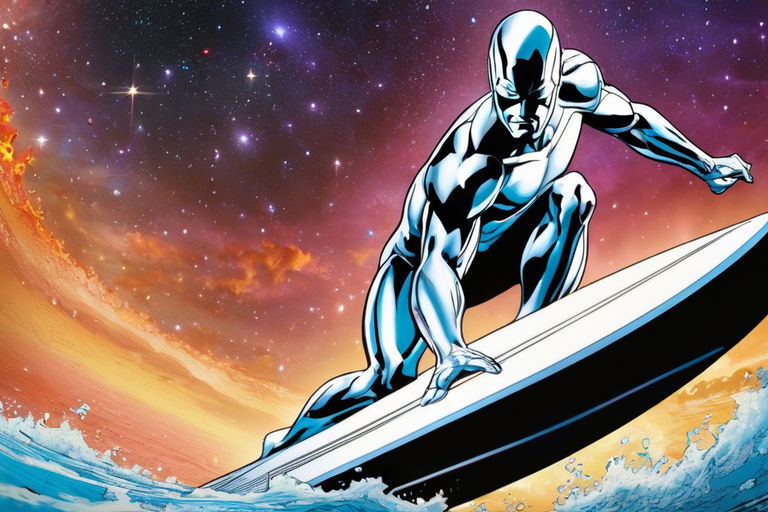
--
In the heart of Africa, hidden by technology and tradition, lies Wakanda, a nation of unparalleled innovation and cultural richness. Its protector, T'Challa, the Black Panther, is not just a superhero but a king, a leader whose wisdom and strength are as formidable as the advanced technology at his disposal. Yet, T'Challa's responsibilities extend beyond the borders of Wakanda; he is also a member of The Illuminati, a secret group of superheroes who work behind the scenes to shape the fate of Earth. This story explores the reasons behind Black Panther's membership in this exclusive circle and the challenges it brings to his role as a king and a hero.
The sun dipped below the horizon in Wakanda, casting long shadows across the royal palace. Inside, King T'Challa sat in contemplation. The weight of his crown was never just about ruling Wakanda; it was about safeguarding humanity from threats unseen and unheard. His induction into The Illuminati was a testament to this greater duty. The group, composed of the most intelligent and powerful individuals in the world, including Tony Stark (Iron Man), Stephen Strange (Doctor Strange), and Reed Richards (Mr. Fantastic), was founded on the principle of preemptive action to protect Earth from all manner of existential threats.
T'Challa's membership was not a matter of prestige but a heavy burden. Wakanda's isolationist policies had long shielded its people from the world's turmoil, but as Black Panther, T'Challa recognized that Wakanda's fate was inseparably tied to the planet's. The Illuminati's goals aligned with his vision of a world where peace was maintained through foresight, strategy, and sometimes, the hard choices that others were unwilling to make.
However, T'Challa's allegiance to The Illuminati was not without its conflicts. The very existence of the group contradicted Wakanda's principles of transparency and democracy. The secrets he kept and the decisions made in the shadows were a stark departure from the open and honest rule he aspired to uphold. This dichotomy plagued T'Challa, who struggled to reconcile his duties as king with his responsibilities as a member of The Illuminati.
One evening, as T'Challa walked through the technologically marvelled halls of his palace, his thoughts were interrupted by an urgent message from Shuri, his sister and the head of Wakandan technology. A new, formidable threat loomed over Earth, one that could devastate nations and alter the course of history. The Illuminati had convened and decided on a course of action that required Wakanda's technology and resources. The decision was controversial, one that would undoubtedly draw criticism and fear if it ever came to light.
As king, T'Challa's first allegiance was to his people and their safety. Yet, as a member of The Illuminati, he understood the global implications of their decisions. The dilemma was a stark reminder of the complexities of power and the often murky waters of global diplomacy and security.
In the days that followed, T'Challa found himself at a crossroads, grappling with a decision that would test the very principles he stood for. In the end, his choice reflected a truth he had always known: that true leadership often required sacrifice, and that the safety of the world, as well as Wakanda, depended on the ability to make difficult decisions for the greater good.
T'Challa's membership in The Illuminati remained a hidden chapter of his legacy, a part of his life shrouded in secrecy and burdened with the responsibility of protecting not just Wakanda, but all of humanity. It was a role that demanded everything from him—wisdom, strength, and, above all, the courage to act in the face of unimaginable challenges.
As the Black Panther, T'Challa was more than just the first Black superhero in the Marvel Universe; he was a symbol of the unyielding strength and moral integrity that defined true heroism. His membership in The Illuminati was a testament to his commitment to this cause, a silent vow to protect the world from the shadows, with the heart of a king and the soul of a warrior.
--
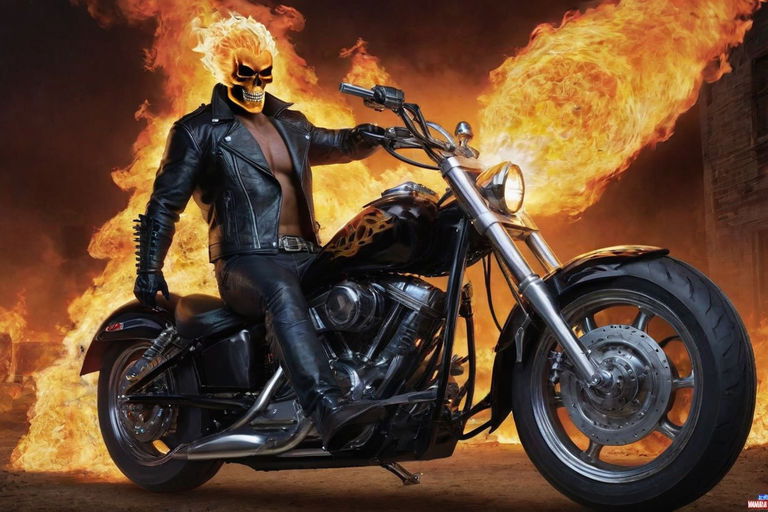
Johnny Blaze:
In the vast, sun-scorched expanse of the Australian Outback, where the red sands stretch to meet an unyielding horizon, a lone figure cut a swath through the desolation, a fiery comet against the backdrop of an azure sky. Johnny Blaze, better known as the Ghost Rider, had brought his hellish crusade to this remote part of the world, riding his infernal motorcycle on a quest that was both personal and otherworldly.
The bike, a marvel of eldritch engineering, blazed with the flames of the damned, its tires leaving smoldering trails on the parched earth. This was no ordinary motorcycle; it was a conduit of Johnny's power, a manifestation of his cursed pact. In the vast openness of the Outback, its capabilities were pushed to their limits, demonstrating feats no earthly vehicle could hope to match. It climbed sheer cliff faces as if they were mere inclines, sped across the surface of waterways that intersected the endless desert, and leapt across gaping chasms that would swallow any other rider whole.
Johnny's journey had brought him here for a reason. Whispered tales had reached him of a darkness that lurked in the heart of the Outback, a malevolent force that preyed on the isolated communities dotting the harsh landscape. People spoke of shadows moving in the night, of souls taken, leaving behind only husks drained of life and hope. The Ghost Rider, bound by his eternal quest to avenge the innocent and punish the wicked, found himself drawn to these stories like a moth to flame.
As he rode, the landscape around him seemed to recoil, the natural world instinctively fearing the supernatural power that Johnny wielded. He rode on, undeterred, until he reached a small, remote town that seemed to be the epicenter of the disturbances. The townsfolk eyed him with a mix of fear and hope, their desperate gazes telling stories of nights terrorized by unseen horrors.
Johnny learned of a creature that had been stalking the Outback, a being not of this world, drawn to this remote part of the Earth by a dark ritual gone awry. It was a demon of sorts, one that had slipped through the cracks of reality, and now sought to claim this land as its own.
As night fell, Johnny rode out to confront the entity, his hell-fire bike illuminating the darkness with its otherworldly glow. The confrontation was inevitable, a clash of fire and shadow under the starlit sky of the Outback. The demon was powerful, its form shifting like smoke, its essence as intangible as the night air. But Johnny Blaze was the Ghost Rider, the Spirit of Vengeance, and he was not so easily overcome.
The battle raged, a spectacle of fire and darkness, until Johnny, drawing upon the depths of his cursed power, ensnared the demon in chains wrought from hellfire, binding it with the weight of its own sins. With a roar that echoed across the desert, he summoned a torrent of divine flame, purging the entity from the world, leaving behind only scorched earth as a testament to their confrontation.
In the aftermath, as the first light of dawn crept over the horizon, Johnny Blaze rode through the town one last time. The people came out of their homes, their faces no longer marked by fear, but by relief and gratitude. The Ghost Rider had saved them, but he lingered not for thanks or praise. His battle was with the darkness, wherever it might hide, and his journey was never-ending.
As he rode back into the vastness of the Australian Outback, his motorcycle a blaze of fire against the rising sun, Johnny Blaze was more than just a man or a myth. He was a legend, the cosmic Ghost Rider, his hell-fire bike carrying him wherever the innocent needed protection, wherever the forces of darkness dared to tread.
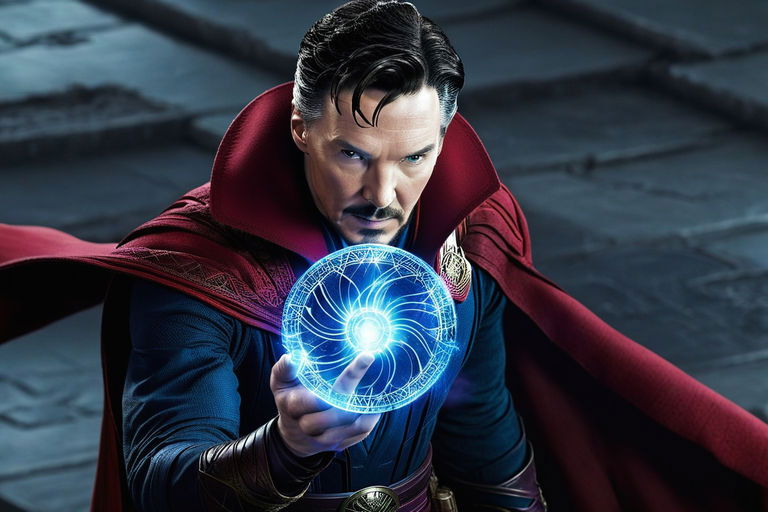
NEDANFÖR EN MARVEL FAN FICTION LIFE AND STORY SPECIAL! PASS PÅ!
Marvel Universe stories can undoubtedly be considered cool literature, as they weave intricate narratives that explore complex themes such as identity, morality, and the human condition. These tales go beyond simple superhero exploits, offering deep character studies and philosophical dilemmas that resonate with readers across generations. With their rich lore, multifaceted characters, and reflection of societal issues, Marvel's comics and stories provide a unique blend of entertainment and insight, making them a captivating form of modern mythology and a vibrant addition to the tapestry of contemporary literature!